Jameh Mosque of Isfahan (Masjed-e Jame of Isfahan)

The Jameh Mosque of Isfahan or Masjed-e Jame of Isfahan is one of the most significant historical and tourist attractions in Isfahan, a city renowned for its cultural heritage. As a key tourist hub in Iran, Isfahan annually welcomes numerous domestic and international visitors. Among its ancient religious and historical structures, the Jame’a Mosque, also known as the Atiq Mosque, stands out prominently.
A considerable portion of the mosque’s current appearance dates back to the Seljuk era. However, many additions to the mosque trace their origins to the Safavid period. Intriguingly, architectural elements from the Al Buwayh dynasty and the third century Hijri are also evident in its design.
The Jameh Mosque of Isfahan, with over two thousand years of history, is celebrated for its unique features and extraordinary architecture. This distinction has earned it a place in the UNESCO World Heritage list.
Contents
History of the Jameh Mosque of Isfahan
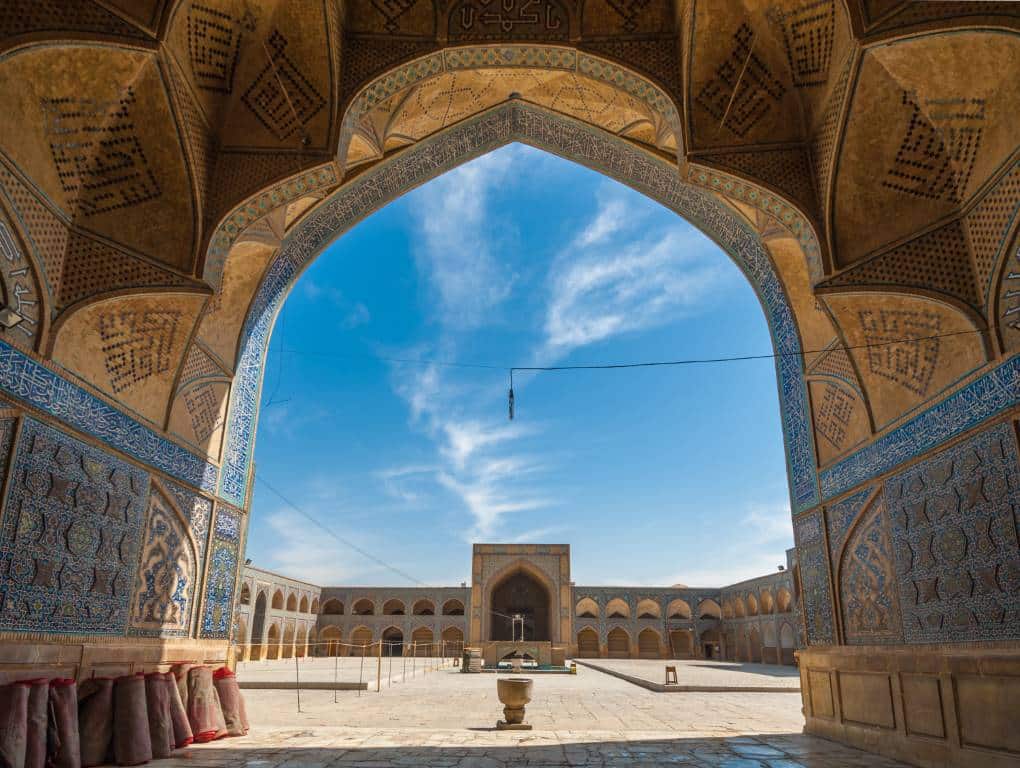
The Jameh Mosque of Isfahan stands as a prime example of Iranian and global architectural excellence. Each part of the mosque, built in various historical periods, offers a glimpse into the evolution of Iranian architecture. In essence, the Jameh Mosque serves as a museum, presenting a comprehensive view of Iranian architectural trends over different eras.
Archaeological research indicates the mosque’s origins predate the Islamic era and Arab control over Isfahan. Initially, it functioned as one of the city’s fire temples. Notably, remnants of pre-Islamic architecture, including a column with Sassanian-era decorations, are visible in the mosque’s northern section.
Despite varying opinions on the exact timeline of the mosque’s transformations, many historians agree its construction began in the early Islamic centuries. However, its mihrab was demolished and realigned in the third Hijri century to correct the qibla direction.
Naming of the Jameh Mosque of Isfahan
The term ‘Jameh‘ implies gathering and the joining of parts, signifying a mosque where people convene, especially for Friday prayers. Hence, some also know this mosque as the Jumah Mosque. Historically, it was known as the Atiq Mosque.
Architecture of the Jameh Mosque of Isfahan
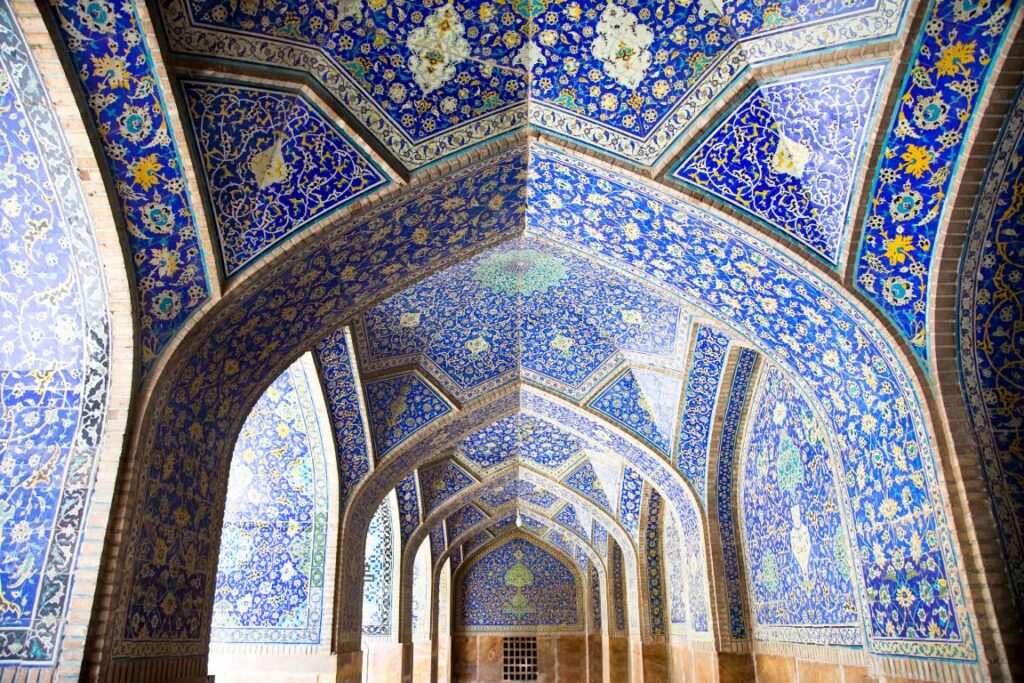
The Jameh Mosque is an architectural masterpiece in Iran, embodying the finest techniques from 15 centuries of Islamic architecture. Its stunning four-iwan design ranks it among today’s most prominent architectural works. The mosque has witnessed numerous significant events throughout history, leading to serious damages.
These events include various wars and fires. Consequently, the Jameh Mosque has undergone multiple restorations and reconstructions over the years. It features several entrances, each leading to distinct and separate areas.
The mosque’s surrounding passages reflect its deep integration with Isfahan’s old urban fabric. The four iwans around the courtyard are key features of Iranian mosque architecture, inspiring similar designs in other Iranian mosques. The intricate muqarnas decorations and stuccowork on these iwans beautifully exemplify the uniqueness of Iranian architecture.
The mosque’s surrounding iwans comprise the Safhe Saheb in the south, Safhe Ostad in the west, Safhe Darvish in the north, and Safhe Shagerd in the east. The beautiful minarets, dazzling tile work, and the inner courtyard of the mosque are believed to date back to the ninth Hijri century.
For those eager to explore this architectural marvel, SURFIRAN’s tours offer an in-depth experience of Isfahan’s rich heritage. OrientTrips provides various travel services to ensure a comfortable and enriching visit to Isfahan.
Features of the Jameh Mosque of Isfahan
The Jame’a Mosque of Isfahan, with its special significance and various sections, offers an enriching visit. Located near the Naqsh-e Jahan Square in Isfahan, this historical and religious structure introduces visitors to the unique Iranian-Islamic architecture. The large courtyard, worshippers in various corners, tall blue minarets, and birds perched around the courtyard’s pond greatly enhance the mosque’s ambiance.
A key attraction of the mosque is its long history and UNESCO World Heritage status. Its distinctive architecture, evolving through different historical periods, sets the Jameh Mosque apart from other Iranian mosques.
Visiting the Jameh Mosque of Isfahan
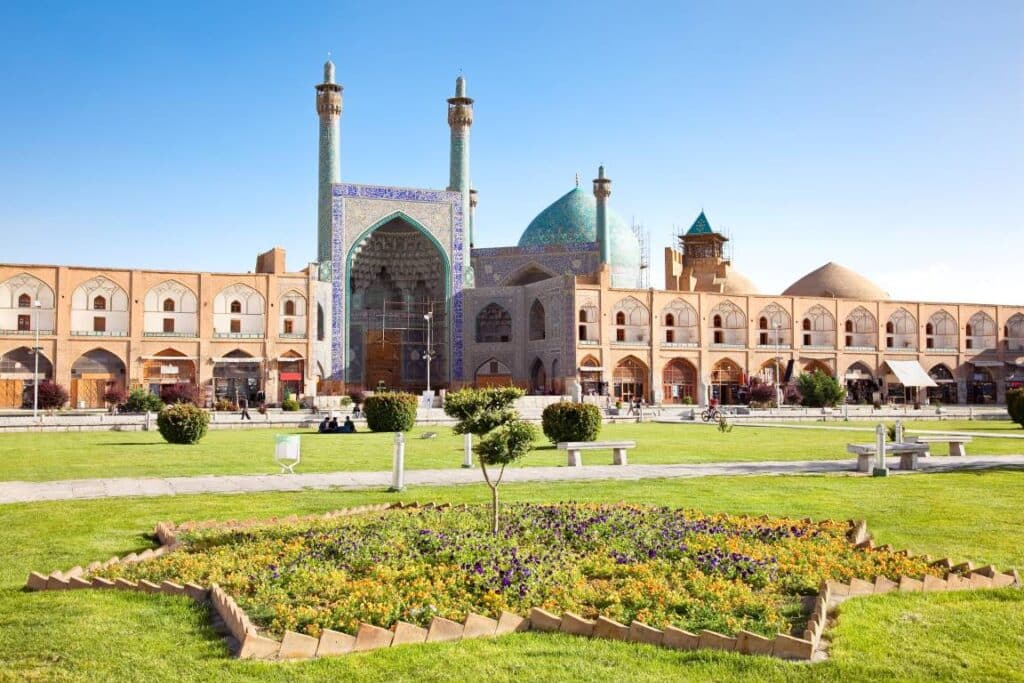
The mosque’s four iwans, a departure from Arab styles, bring it closer to traditional Iranian mosque construction. The iwans’ delicate decorations are a feast for the eyes. The 16-sided domes, replacing the traditional four-sided ones, have made the mosque a unique architectural piece, inspiring similar designs in mosques across Iran, including in Tabriz, Samarkand, and Shiraz.
The Jame’a Mosque’s grand entrance, the Ilkhanid Mihrab, the Winter Shabestan, Beit al-Sheta, the Dome of Taj al-Mulk, and their intricate decorations display the evolution of authentic Iranian architecture from the Ilkhanid to the Safavid era.
The mosque played a pivotal role in shaping modern Isfahan, influencing the development of neighborhoods, markets, streets, and buildings around it. The iwans, like the Saheb, Darvish, Chahar Sutun, and Ostad, add to the mosque’s captivating interior. Historically, the Darvish Iwan was named after a teacher who taught there.
The mosque’s exceptional stucco work, especially in the shabestans, is another unique feature. The Beit al-Sheta corridor, with 18 arches used in winter, and the elevated Shabestan Emad, protect against cold drafts.
The use of marble in the arches for light transmission, tent-like rooms, and shabestans warm in winter and cool in summer, are additional reasons for visiting this architectural marvel. These distinctive features make the Jame’a Mosque of Isfahan a must-visit historical site.
Different Sections of the Jame’a Mosque of Isfahan
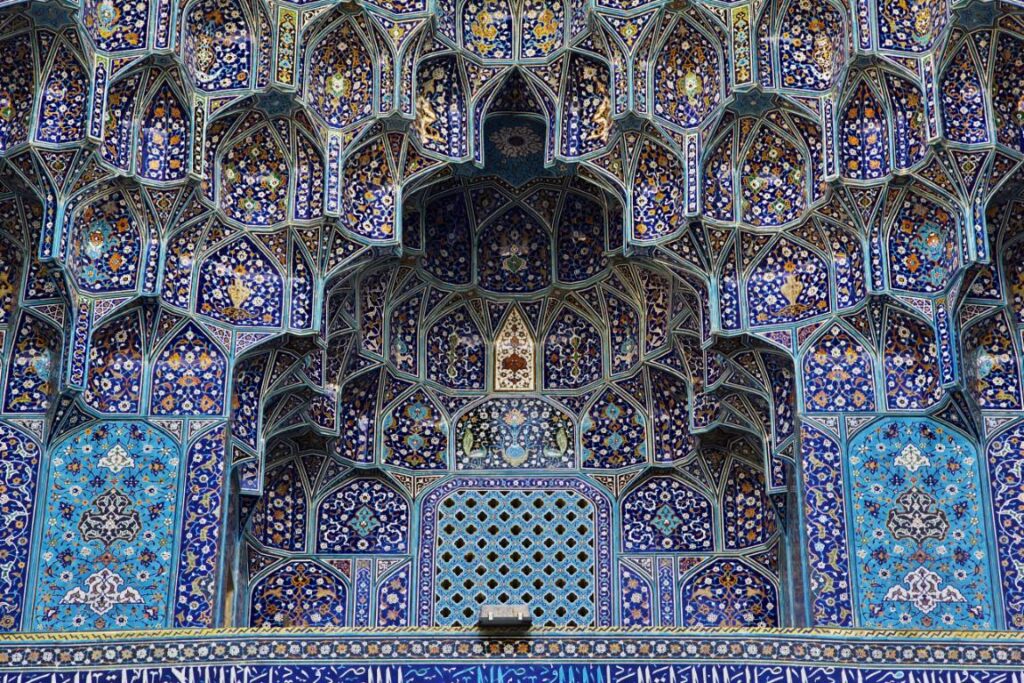
The Jame’a Mosque of Isfahan, as Iran’s oldest mosque, is a significant religious tourist destination. For your trip to Isfahan, easily book your flight or other public transportation online through websites like Mister Ticket and embark on a memorable journey.
The Jame’a Mosque comprises various stunning parts, each with unique and captivating features that leave a profound impression upon entering its courtyard. The most important sections of the mosque include:
Southern Dome
In the mosque’s southern iwan, the beautiful dome and forty pillars are adorned with eye-catching stucco work, dating back to the years 465 to 485 Hijri lunar. During the Seljuk era, alongside the Jame’a Mosque, other significant buildings were constructed, such as the Ministry of Khwaja Nizam al-Mulk.
In the 6th century Hijri, a front iwan was added to this dome, featuring exquisite muqarnas, enhancing the brick dome’s beauty and showcasing intricate decorative patterns.
Northern Dome
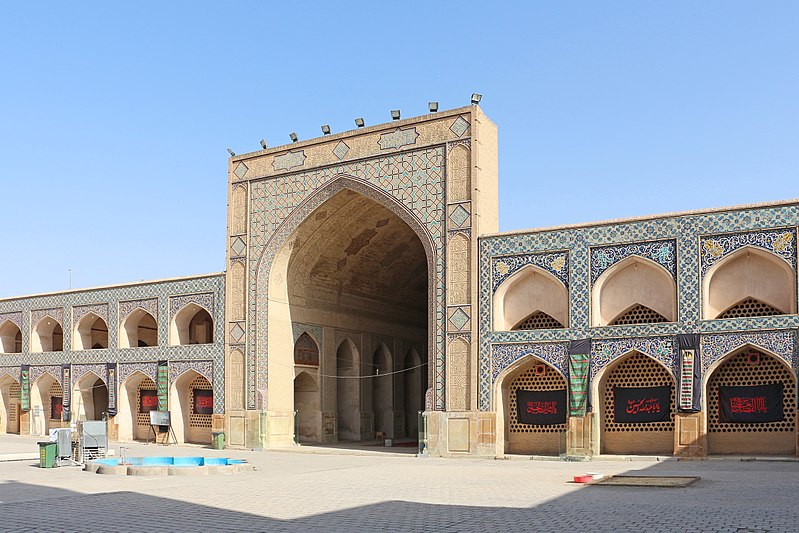
This dome, symmetric to the Khwaja Nizam al-Mulk Dome, is located in the northern part of the courtyard and dates back to the year 481 Hijri. Many historians believe that one of the Seljuk ministers, Abu’l-Ghana’im Taj al-Mulk, ordered its construction.
Mosque Shabestan
The Shabestan of the mosque, with its extraordinary beautiful stucco work and delicate craftsmanship, stands as one of the mosque’s most stunning sections. Resting on round columns, this Shabestan was constructed during the Deylami period.
Special Features of the Iwans
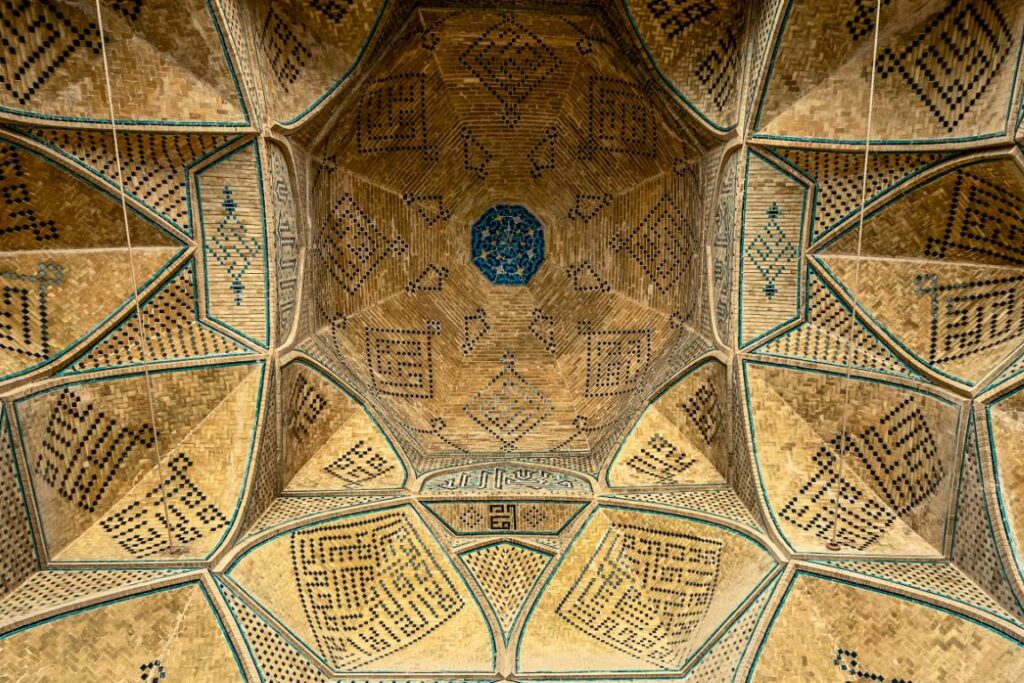
Iwan-e Saheb
A unique aspect of Iwan-e Saheb includes inscriptions on precious marble slabs placed within the iwan. Constructed during the Seljuk period, this iwan, with less height compared to Iwan-e Ostad, boasts exquisite brickwork. Its structure effectively transfers forces from the arches to the ground.
Iwan-e Ostad
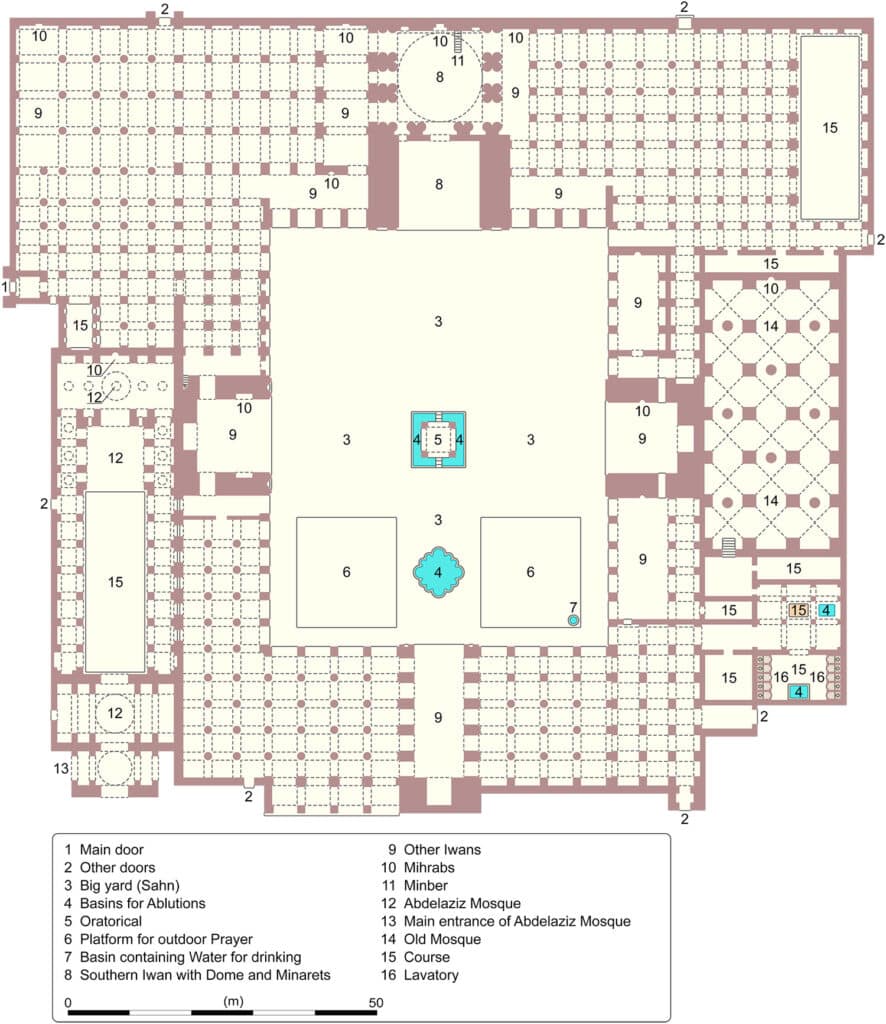
The western Iwan, known as Iwan-e Ostad, was built during the Seljuk era, but its tilework and decorations date back to the Safavid period. It features Thuluth and Nasta’liq calligraphy lines written during Shah Sultan Hussein’s reign in 112 Hijri lunar, including unique builder’s lines by Mohammad Amin Isfahani.
Iwan-e Omar
Located on the mosque’s eastern side, Iwan-e Omar or Safhe Omar, is notable for its historical inscription related to the reign of Sultan Mahmoud of the Al-e Bouyeh dynasty. This inscription, written by Aziz Al Taqi Al Hafez in 768 Hijri lunar, features religious phrases in builder’s script. The iwan also bears the names of the builders and master craftsmen, including Morteza Ibn al-Hasan al-Abbasi al-Zainabi, Hassan Caravanserai Tile Worker, Kohyar Al-e Barquieh, etc., in beautiful builder’s script.
Winter Shabestan (Beit al-Sheta)
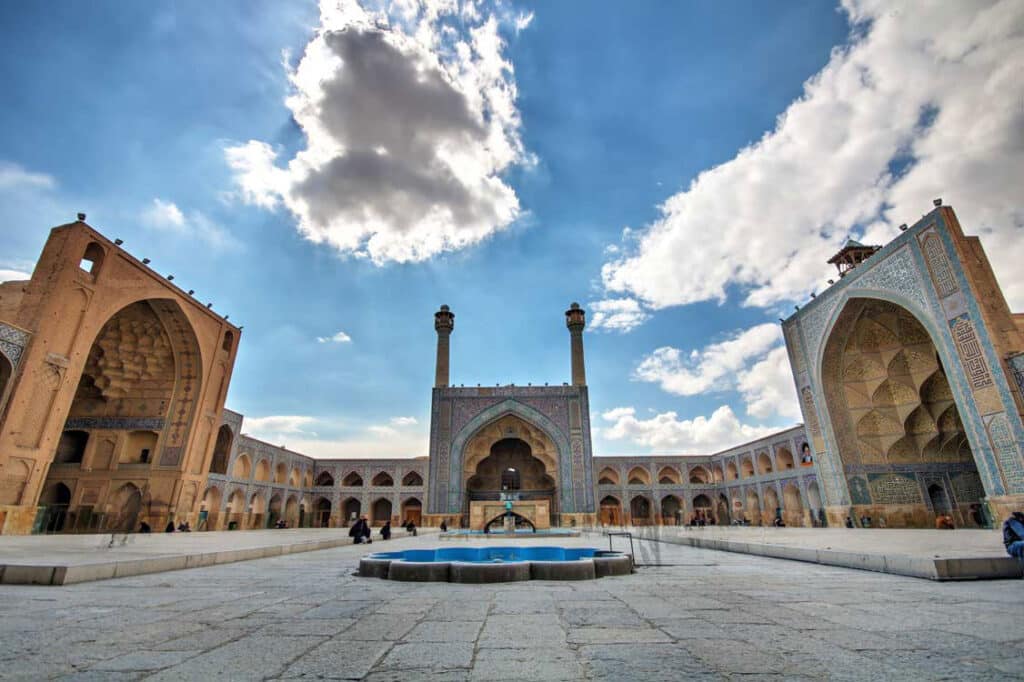
To reach this Shabestan, one must pass through the Masjid al-Jayto. An inscription on the entrance reveals its Timurid-era origins, commissioned by Emad bin al-Muzaffar Varzaneh. This Shabestan is also known as Shabestan Emad for this reason.
The Winter Shabestan is stunningly grand, featuring tent-shaped rooms and thick columns. Each arch in the Shabestan incorporates a piece of transparent marble to provide necessary lighting.
Masjid al-Jayto (Masjid al-Jayto)
Masjid al-Jayto, a small prayer hall located in the northern part of Iwan-e Ostad, is distinguished by its mihrab with exceptionally unique stucco work, making it one of the mosque’s most beautiful prayer niches. The mihrab of Masjid al-Jayto is considered a masterpiece of Iranian art and architecture, enjoying global fame.
Library of Khwaja Nizam al-Mulk
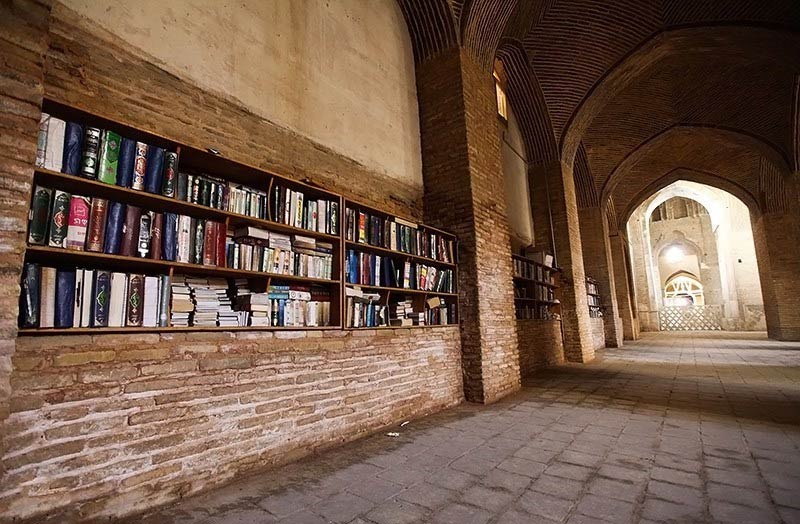
This renowned library, originally in the southeast shabestan of the mosque, was unfortunately destroyed during the bombing of Isfahan. It was later restored to its former glory. The library holds a global reputation for its diverse collection from various Islamic periods, making it a significant technical and artistic resource.
Researchers and scholars from around Iran and the world visit this library yearly, conducting studies on it. The results of these researches have been published in numerous articles and books by famous archaeologists and architects in several languages, including translations into Persian.
Stone Basins (Sangabs) of Jame’a Mosque
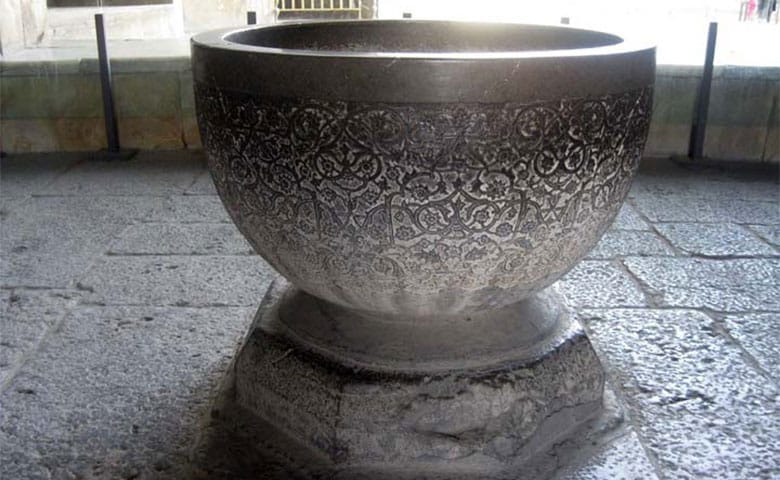
The mosque houses four stone basins, each unique:
Sangab of Iwan-e Saheb
Located opposite Iwan-e Saheb in the southern part of the mosque, this simple stone basin is set within a square stone pond with five spouts. It features a salawat inscription for the fourteen infallibles in Thuluth script and small crenellations on the outer upper side, with larger crenellations below. An inscription on the basin reads “Waqf Shara’i (Endowment for Religious Purpose) made possible by Master Amin son of Ismail…1102.”
Sangab of Iwan-e Darvish
Made of Persian stone, this sangab was originally near the tomb of Allameh Majlesi but later moved to its current location in the northern part of the mosque. Half of its 115 cm diameter opening has been lost due to damage.
Architectural Significance
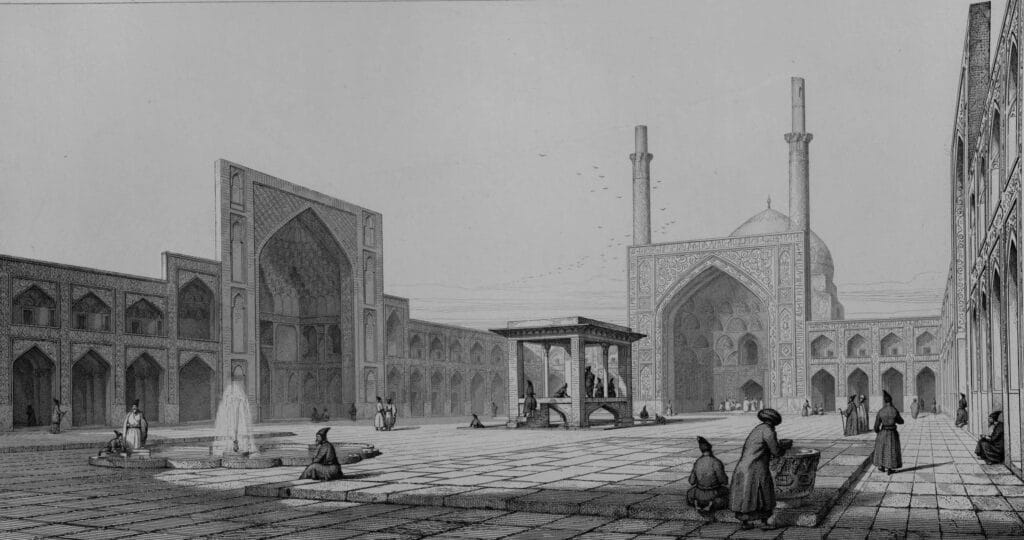
The mosque incorporates architectural experiences from thousands of years of mosque construction, especially in Iran, showcasing historical styles from Iran and neighboring countries. Features like brick columns in two, three, and four segments, decorative bricks with Indian designs, majestic four iwans, beautiful entrances and arches, large and stunning domes, tilework, and decorated facades make it an unparalleled structure.
The 5th-century Hijri transformation of mosque architecture from Shabestani to Chahar Iwan (four-iwan) style marked a significant evolution, influencing many Iranian cities’ Jame’a mosques’ design. This Iranian mosque design is now used globally in many Muslim countries.
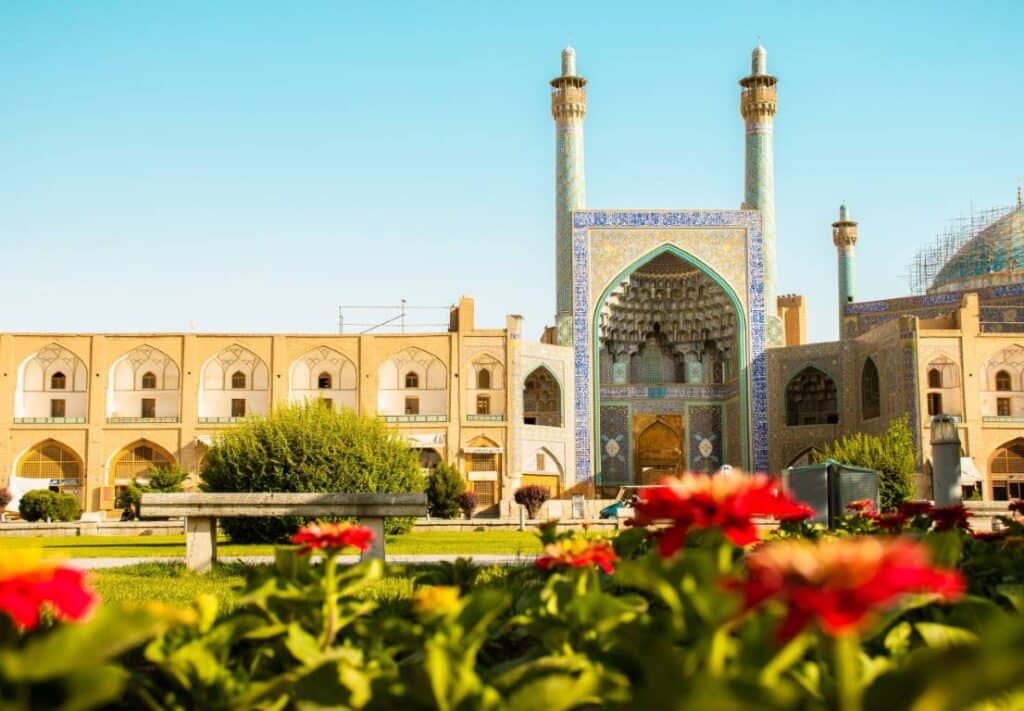
Visiting Conditions
Visitors must purchase tickets, with different rates for Iranian and non-Iranian nationals. The Jame’a Mosque of Isfahan is open daily from 9 AM to 11 AM and 1 PM to 4:30 PM.
Address and Metro Access
Located in Qiyam Square on Allameh Majlesi Street, the mosque is easily accessible by public transportation, including metro, train, and bus. The closest metro station offers a straightforward route for visitors. Bus and taxi stations are also available near the historical site on Allameh Majlesi Street.
For those preferring to drive, parking facilities are available near the mosque. The most direct route is via Hatif and Ibn Sina streets, leading to Abdolrazzagh and then Allameh Majlesi streets.



